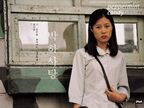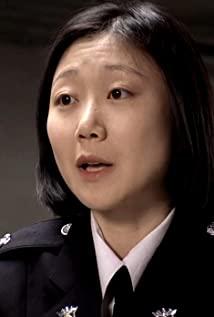After watching "Burning" and "Poetry", I finally decided to watch "Mints". After watching it, I found that the three movies have happened to string together Li Cangdong's nearly two decades.
Watching a movie with a strong author's consciousness is like watching a good painting: the years and months the artist spends on the canvas, you have to change the time you watch. The difference between a movie and a painting is that the time spent appreciating the former is almost entirely set by the director. The movie is a tiger, and the audience is you. Whether you accept it or not, when you decide to sit down and watch it, you are forever dedicating two hours of your life to this group of images.
"Mints" is the only work that uses flashbacks among the three above-mentioned movies, and it is also the one with the best time extension of the three. The audience spent two hours following the grinning protagonist Jin Yonghao through the moment before his death, like "lived the movie", going back from 1999 to 1979 when the mint first appeared. The gap between the seven memories is connected by cars and people walking in the opposite direction. At the end of the movie, the tears of the hero under the sun finally extinguished, and the audience's memories start from the beginning:
Kim Yong-ho left the factory to join the army. Every time his first love girlfriend sent him a letter, he attached a mint from the factory; he was shot in the right leg in the Gwangju incident and killed the female student by mistake in extreme panic and pain. He was unwilling to die; he left his hometown and went to work as a policeman in another city. He used his right hand soiled during the first torture to extract a confession to force away his first love who came to fix his first love; his wife became pregnant in 1987, but he was more willing to stay The prisoner was tortured in the detention center, and he had to quote the prisoner’s diary to ask him if his life was good. Later, his wife converted to Christianity, and he also started a small business. The two were not only close, but also fought in front of their lovers. Later, he bankrupted his family, betrayed his relatives, lived in a plastic greenhouse and decided to die. Suddenly received news that his first love was about to die, he decided to die.
Twenty years ago, Jin Yonghao had aspirations to life and death in a plastic greenhouse, but in 2019, the core image of the movie "Burning" turned out to be a plastic greenhouse with flames. In the middle of the two films, Lee Cangdong, who was shocked by the terrible news that Roh Moo-hyun jumped off the cliff after stepping down as the Minister of Culture of South Korea. The 2010 "Poem" is the exact opposite of these two cruel works. It has created a true, good and beautiful female image. It not only pays tribute to Li Cangdong's own enthusiasm that slowly rose and suddenly extinguished in the past ten years, but also opened up his vision of the 2010s. Three generations of Korea’s old, middle-aged and young people look forward to the lack of life in their respective lives.
Before and after, Li Cangdong's movies were angry and desolate. For example, in "Mints", Xue Jingqiu's distorted face is almost a ghost face in Japanese Noh drama. Even a year before the Gwangju Incident, his eyes were as cold as the tip of a black knife. At the Diaosi writer played by Liu Yaren, another extreme appeared: Real Diaosi's eyes were not even cold, and when they were blaspheming and fantasizing in a small room, their eyes were empty.
View more about Peppermint Candy reviews











